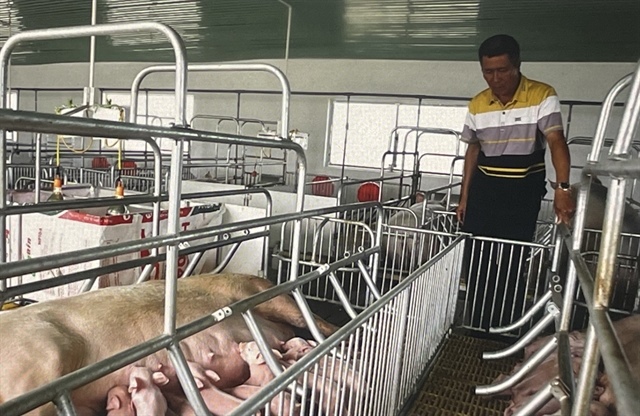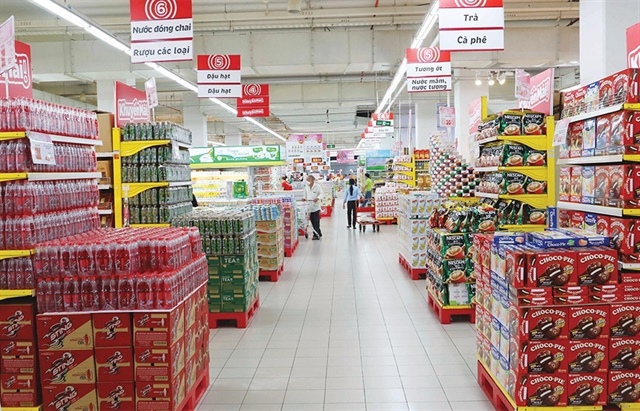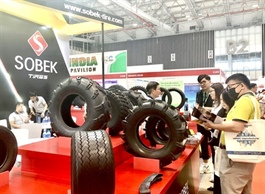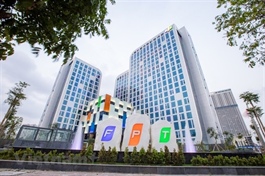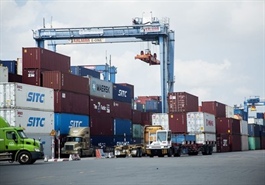Ben Tre develops value chains for agricultural products
Ben Tre develops value chains for agricultural products
The Cuu Long (Mekong) Delta province of Ben Tre is expanding the development of value chains for key agricultural products.
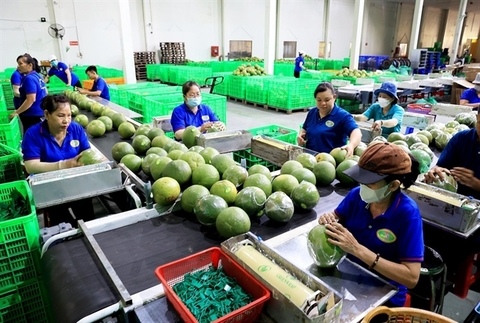
Workers of Huong Mien Tay Establishment in Ben Tre Province’s Mo Cay Bac District pack green skin and pink flesh grapefruit. The establishment sells the fruit in domestic and export markets. — VNA/VNS Photo Hong Dat |
The key agricultural products include coconut, rambutan, green-skin and pink-flesh grapefruit, longan, flowers and ornamental plants, pigs and cattle.
Ben Tre, which is the country’s largest coconut producing province, has more than 78,000ha of coconut with an annual output of 688 million nuts. More than 70 per cent of the province’s population earns their income related to coconut growing and production.
Thirty-two co-operative groups and 28 co-operatives, with a total of more than 6,200 members, have developed value chains for a total of more than 5,648ha of coconut.
More than 348ha of rambutan, 98.5ha of longan and 374ha of green skin and pink flesh grapefruit in the province have value chains to secure the quality of the fruits, buyers and stable prices for farmers.
Nguyen Van Nhip in Giong Trom District’s Phuoc Long Commune has linked with a processing company to grow coconut under organic methods for two years.
After linking with the company, he has secured buyers and gets a selling price of VND5,000 - 8,000 per dozen of coconut higher than the market price.
The company teaches him organic growing techniques, and this helps reduce the cost of chemical fertilisers and pesticides.
The province has 67 co-operative groups and 67 co-operatives which link with companies to develop value chains for their agricultural production, according to its Department of Agriculture and Rural Development.
Ngo Tuong Vy, general director of the Chanh Thu Export and Import Fruit Company Limited in Cho Lach District, said her company supported the linkage between farmers, co-operatives and companies, and this linkage needed to focus on the long term and sustainability.
The company hopes the department will assist it to develop a value chain for 100-200ha of durian.
It is willing to invest in co-operatives and assist in managing and operating them properly, according to Vy.
Huynh Quang Duc, deputy director of the department, said co-operative groups and co-operatives were weak in linkages with other related stakeholders in their production.
The linkage between farmers and companies in some localities was not sustainable and effective, he said.
Most companies participating in value chains which buy agricultural produce, except coconut, were small or medium sized, did not have stable buyers and were easily affected by many reasons, he said.
“The province will strengthen implementing advocacy activities, transfer farming techniques and provide consultancy for developing value chains,” he said.
Nguyen Minh Canh, deputy chairman of the province People’s Committee, said the province would take measures to effectively develop value chains for key agricultural products and improve the lives of people.
The measures would include developing linkages among farmers through co-operative groups and co-operatives, between co-operative groups and co-operatives and companies, and developing companies which lead related stakeholders to develop strong value chains, he said.
Dam Van Hung, owner of Huong Mien Tay in Mo Cay Bac District, which is the province’s largest establishment specialising in exporting green skin and pink flesh grapefruit, said that to develop a value chain for an agricultural product, it should be developed through the collective economy.
His establishment has linked with co-operative groups and co-operatives which grow green skin and pink flesh grape fruit to buy the fruit, and this secures both buyers for farmers and quality fruits for his establishment to export, he said.
The province aims to get production value of $1 billion for coconut and shrimp each in 2025, and $500 million for cattle, and flowers and ornamental plants each.
It will develop six concentrated coconut growing areas, including five organic coconut growing areas for a total of 1,826ha and a 20ha coconut growing area for harvesting young nuts for drinking juice.
More farmers in the province have switched to growing their agricultural produce with good agricultural practices (GAP) standards, along with origin traceability and brand names, to improve value.
The province has more than 24,240ha of coconut, fruits and aquaculture which are cultivated under GAP or organic standards.


